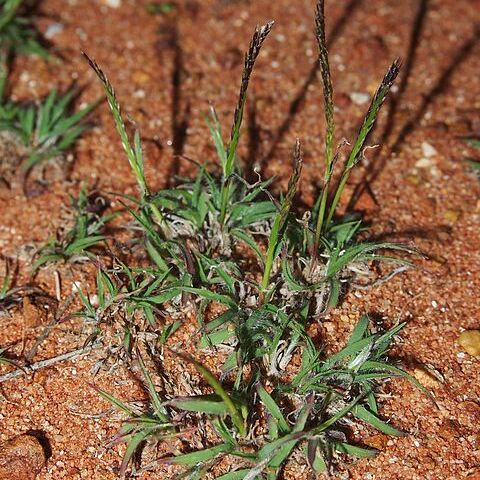Slender densely tufted perennials; culms erect or pendulous, unbranched. Leaves mainly basal; leaf-blades narrow, usually filiform; ligule a narrow ciliate membrane. Inflorescence a solitary terminal subsecund spike, the spikelets biseriate, overlapping and ± appressed to the rhachis. Spikelets 3–many-flowered, linear to elliptic, laterally compressed, disarticulating between the florets; glumes 1-nerved or rarely the upper 3-nerved, narrow, keeled, persistent, membranous, unequal, shorter than the lemmas or the upper glume exceeding the lower lemmas, lower glume often asymmetrical; lemmas 3-nerved, rounded or obtusely keeled, membranous, glabrous, the tip 2-toothed or subentire, sometimes with additional lobes between the teeth, mucronate or 1–3-awned; palea usually winged and ciliolate along the margins; callus villous and sometimes bearded in front. Caryopsis narrow, trigonous to almost terete in cross-section.
Spikelets 2–many-flowered, laterally compressed, linear to elliptic, disarticulating above the glumes and between the florets; glumes 1-nerved or rarely the superior 3-nerved, narrow, keeled, persistent, unequal or subequal, shorter than the lemmas or the superior exceeding the lower lemmas, the inferior often asymmetric; callus villous, sometimes barbate in front at the base of the rhachilla internode; lemmas 3-nerved, dorsally rounded or obtusely keeled, membranous, glabrous, subentire or 2-toothed at the apex, sometimes with additional lobes between the teeth, mucronate or 1–3-awned; palea sometimes winged on the keels.
Inflorescence a single terminal subsecund raceme, the spikelets biseriate, overlapping or not, broadside to and appressed to the axis.
Caryopsis narrow, trigonous to almost terete in section.

